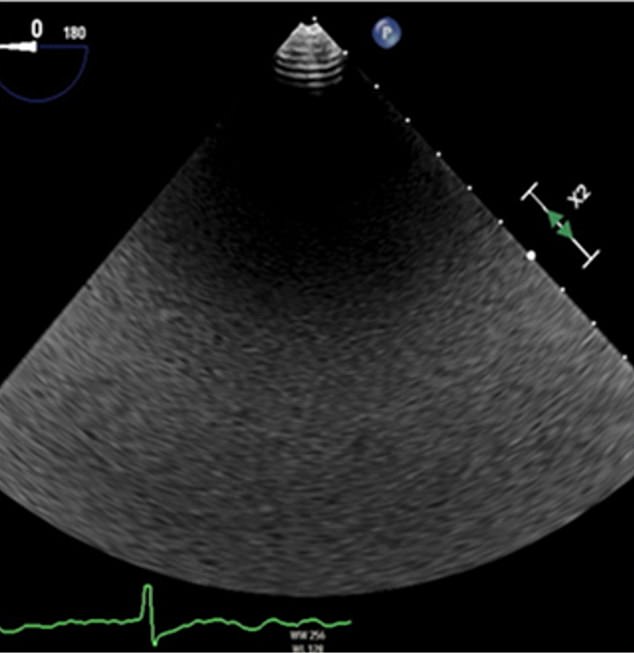A real sticky situation! Doctors baffled as probe pulled out of man’s throat has GUM on it
- Surgeons removed the tube from the patient's esophagus after it showed nothing
- Anesthetists said the 69-year-old chewed gum before the operation
When doctors pushed a camera probe down a man's throat, they expected to see a clear outline of his heart. So they were stunned when nothing at all came out.
Assuming it was broken, the surgeons pulled the tube out, only to discover that it had a piece of chewing gum stuck to it.
Anesthetists, who put the patient to sleep for the procedure, then shared with their colleagues that the unidentified 69-year-old from New Hampshire chewed gum before the surgery.
Writing in the diary CASEsaid doctors at Dartmouth-Hitchcock Medical Center, “When asked to spit out the gum, they refused and proceeded to swallow it.”
They shared a photo of the blue gum attached to the probe and said they were “surprised.”
Surgeons pulled out the tube, thinking it was broken, but discovered it had a piece of chewing gum stuck to it.

However, after the tube was inserted about 30 to 35 cm into the esophagus, doctors could see no “identifiable heart structures.”
The scan was part of a pre-surgery check.
Doctors inserted a left atrial appendage occlusion (LAAO) device – a potentially life-saving operation that closes a small sac in the heart to reduce the risk of strokes by preventing the formation of a blood clot.
It may be offered to patients who cannot take anticoagulants (medications that help prevent blood clots) due to side effects.
The patient had not eaten or drunk anything since the night before.
Before the procedure could take place, doctors had to perform an ultrasound to check for clots in the left atrial appendage – the small sac on the heart that they were going to close off.
To do this, they passed an ultrasound tube through the mouth into the esophagus.
If there was a clot, surgery would have to be postponed until it disappeared.
However, after the tube was inserted about 35 cm into the patient's esophagus, doctors could no longer see any “identifiable heart structures.”
Doctors noted that it was 'relatively common' for trapped air to lead to poor quality images on the scan.
But there was “no difference” in image quality, even after moving the probe and changing the settings on the device.
Assuming the tube was defective, the doctors removed it with the plan to use another one.
Doctors then removed the gum, reinserted the tube and were able to see the heart clearly. There was no evidence of a clot, so they went ahead with the surgery, which was successful.
In their report, the doctors indicated that it was the first time in their career that chewing gum interfered with the scan.
“Although this led to a minor procedural delay, the patient was still able to successfully have the LAAO device implanted,” they noted.
However, the team said they would have addressed the issue if the gum had fallen off the tube when it was removed from the patient.
In addition to 'opaque substances' covering the probe, defects in the device, patient anatomy or a probe with the wrong temperature can also blur results.
